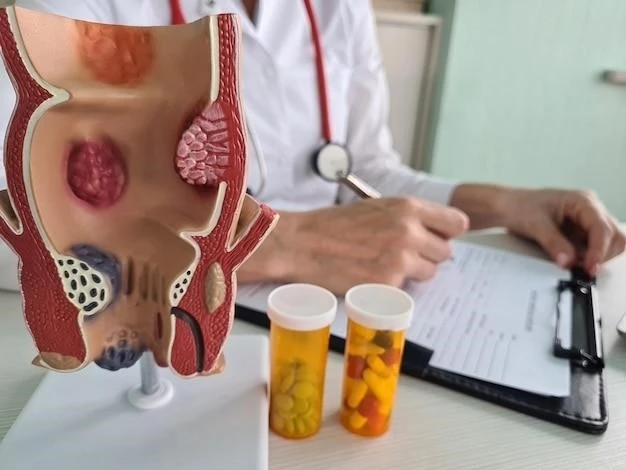Understanding Ectodermal Dysplasia
Ectodermal Dysplasia is a genetic disorder characterized by abnormal development affecting various ectodermal structures such as hair‚ teeth‚ nails‚ sweat glands‚ skin‚ and facial features․ This article aims to provide a comprehensive understanding of this condition‚ including its causes‚ symptoms‚ and treatment options․
Introduction to Ectodermal Dysplasia
Ectodermal Dysplasia is a rare genetic disorder that primarily affects the ectodermal structures in the body․ This condition is inherited and can lead to abnormalities in the development of hair‚ teeth‚ nails‚ sweat glands‚ skin‚ and facial features․ The underlying cause of Ectodermal Dysplasia is often linked to mutations in the EDA (Ectodysplasin A) gene‚ particularly in X-linked disorders․
Individuals with this disorder may exhibit various symptoms depending on the type and severity of the condition․ Treatment options for Ectodermal Dysplasia focus on managing the symptoms and improving the quality of life for affected individuals․ Understanding the complexity of Ectodermal Dysplasia is crucial in providing appropriate care and support to those living with this condition․
Effects on Hair‚ Teeth‚ Nails‚ and Sweat Glands
Ectodermal Dysplasia can have profound effects on various ectodermal structures in the body․ Individuals with this genetic disorder may experience abnormalities in hair growth‚ leading to sparse or fine hair․ Dental abnormalities‚ such as missing teeth or malformed teeth‚ are common in affected individuals․
The condition can also impact the nails‚ causing them to be thin‚ brittle‚ or improperly formed․ Sweat glands may be affected in individuals with Ectodermal Dysplasia‚ leading to reduced ability to sweat‚ which can result in heat intolerance․ These effects on hair‚ teeth‚ nails‚ and sweat glands can significantly impact the quality of life for individuals with this disorder․
Impact on Skin and Facial Features
Ectodermal Dysplasia can also affect the skin and facial features of individuals with the condition․ Skin abnormalities may include dry skin‚ a lack of sweat glands in certain areas‚ or a reduced ability to heal from skin injuries․ These skin manifestations can lead to discomfort and increased susceptibility to skin infections․
Facial features in individuals with Ectodermal Dysplasia may exhibit certain characteristics such as a prominent forehead‚ a flattened bridge of the nose‚ or a thin upper lip․ These effects on skin and facial features can contribute to the unique appearance associated with this genetic disorder․ Understanding these impacts is essential in providing comprehensive care and support to affected individuals․
X-Linked Disorder⁚ Ectodysplasin A Gene Mutation
Ectodermal Dysplasia is often associated with mutations in the Ectodysplasin A (EDA) gene‚ particularly in X-linked forms of the disorder․ The EDA gene provides instructions for the production of a protein that plays a crucial role in the development of ectodermal tissues․
When mutations occur in the EDA gene‚ it can disrupt the normal development of structures such as hair‚ teeth‚ nails‚ sweat glands‚ and skin‚ leading to the characteristic features of Ectodermal Dysplasia․ Understanding the genetic basis of this disorder‚ especially in X-linked cases‚ is important for diagnosis‚ genetic counseling‚ and possible future targeted treatments․
Symptoms of Ectodermal Dysplasia
Individuals with Ectodermal Dysplasia may present with a range of symptoms that affect various ectodermal structures․ Common symptoms include sparse or fine hair‚ dental abnormalities such as missing or malformed teeth‚ thin or brittle nails‚ and reduced ability to sweat․
Other symptoms may include dry skin‚ a lack of sweat glands in certain areas‚ heat intolerance‚ and distinct facial features like a prominent forehead or a thin upper lip․ The symptoms of Ectodermal Dysplasia can vary in severity depending on the specific type of the disorder and its genetic cause․ Early recognition and management of these symptoms are essential in improving the quality of life for affected individuals․

Treatment Options for Ectodermal Dysplasia
Management of Ectodermal Dysplasia focuses on addressing the symptoms and improving the quality of life for individuals affected by this genetic disorder․ Treatment options may include dental interventions such as dental implants‚ dentures‚ or orthodontic treatments to address missing or malformed teeth․
For hair abnormalities‚ supportive measures like wigs or hair prostheses can be utilized․ In cases where sweating is impaired‚ individuals may need to avoid overheating and stay hydrated to prevent complications․ Additionally‚ maintaining good skincare practices and seeking medical attention for skin issues are crucial aspects of managing Ectodermal Dysplasia․
Collaboration with a multidisciplinary healthcare team‚ including genetic counselors‚ dermatologists‚ dentists‚ and other specialists‚ can help tailor a comprehensive treatment plan for individuals with Ectodermal Dysplasia․ Research into potential targeted therapies is ongoing to further improve outcomes for those affected by this condition․
Conclusion
In conclusion‚ Ectodermal Dysplasia is a complex genetic disorder that impacts various ectodermal structures‚ leading to abnormalities in hair‚ teeth‚ nails‚ sweat glands‚ skin‚ and facial features․ Understanding the underlying genetic mutations‚ particularly in the Ectodysplasin A gene in X-linked cases‚ is crucial for diagnosis and management․
The symptoms of Ectodermal Dysplasia can vary widely in presentation and severity‚ necessitating a multidisciplinary approach to treatment involving dental‚ dermatologic‚ and supportive interventions․ By addressing the specific needs of individuals with this condition and staying abreast of emerging treatment options‚ healthcare providers can enhance the well-being and quality of life of those living with Ectodermal Dysplasia․
